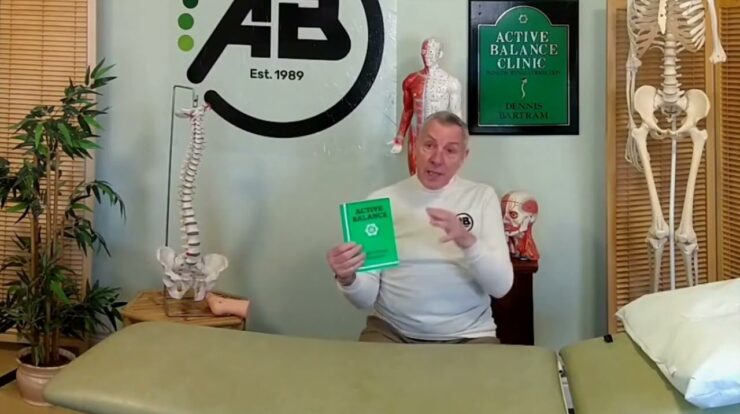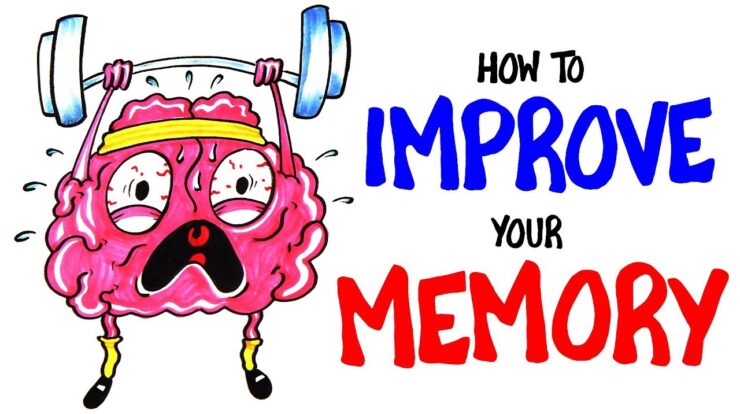
 Translator: Nora Eskander Validator: Eman Shahen This happy photo of me was taken in 1999. I was in my senior year. And that was right after the dance training. I was really, very happy. I remember exactly where I was about a week and a half later. I was sitting in the back of my used minivan In a campus parking lot When I decided I will commit suicide.
Translator: Nora Eskander Validator: Eman Shahen This happy photo of me was taken in 1999. I was in my senior year. And that was right after the dance training. I was really, very happy. I remember exactly where I was about a week and a half later. I was sitting in the back of my used minivan In a campus parking lot When I decided I will commit suicide.
I went from decision-making to complete planning very quickly. And I was that close to the edge of a cliff. I was closer than ever. The only reason was to pull my finger off the trigger It was thanks to a few happy coincidences.
And then, This is what scared me the most: the chance element. So I became more systematic about testing different methods Which enables me to control the ups and downs of my life, That proved to be a good investment.
For example, many normal people may have six to ten major depressive episodes During their life. I have bipolar depression that runs in my family. I have more than half at this point, And I learned a lot.
Beuraxreview com Beurax Review https://t.co/51jkDiLMoX via @YouTube
— VideoInformProducer (@Video_Info_Pro) December 4, 2020
I had many opportunities to do something, And a lot to succeed in this darkness, Taking good reviews. So I thought that instead of getting up and giving any kind of recipe for success Or flashback memories, I’d like to share my recipe to avoid self-destruction, And certainly self-paralysis. And the tool I found has proven to be the most reliable safety net Emotional free fall It is actually the same tool That helped me to make the best business decisions. But that is less important. It is called … stoicism. This sounds tedious. (Laughter) You might think of “Spock”, Or a picture like this might conjure you up … (Laughter) A cow standing in the rain. She is neither sad nor particularly happy. It’s just an unconscious creature taking what life throws its way. You might not think of the ultimate contender, for example, Bill Belichick. Lead coach of the “New England Patriots”, Who has the National Super Bowl titles.
And stoicism spread like wildfire in the ranks of the local football league As a method of training on mental toughness in the past few years. You might not think of the Founding Fathers … Thomas Jefferson, John Adams, George Washington Just to name a few, three students of Stoicism. In fact, George Washington had a play on stoicism … was “Cato, a tragedy” … He was performing it for his troops in “Valley Forge” to keep motivating them. So why do practical people focus so much on ancient philosophy? This sounds very academic. And I would encourage you to think of Stoicism a little differently, As a primary system for growth in high-stress environments, To make better decisions.
And it all began here, Somewhat, On the balcony. So around the year 300 BC in Athens, A person named Zenon the Cypriot taught many lectures And he’s walking around a painted balcony called, “Stoa.” This later became “stoic”. And in the Greco-Roman world, People were using stoicism as a universal system To do many, many things But for our goals, the most important one was training yourself To separate what you can control from what you cannot control, And then do exercises to focus completely On the first.
This reduces emotional reaction. Which could be a great power. On the contrary, let’s say you are a four-back Miss a pass and you become angry at yourself. That could cost you a game. If you’re the CEO, and you’ve suddenly become angry at a decent employee Due to a minor infringement, This can cost you an employee. If you are a college student, for example, in difficult circumstances, And you felt helpless and hopeless, Relentlessly, it could cost you your life. So the stakes are very high. And there are several tools in the toolkit to get you there.
I’ll focus on one that totally changed my life in 2004. This tool found me because of two things: A very close friend, a young man, my age, died unexpectedly of pancreatic cancer, Then my girlfriend, whom I thought I was going to marry, deserted me. She said she had had enough, and did not send me a letter to tell me that she wanted to separate, But she gave me this, Separation plate. (Laughter) I’m not making this up, I’ve kept it. “Business hours end at five o’clock.” She gave me this plate to put on my desk for personal health Because at the time, I was working on my first real job.
I had no idea what I was doing. I was working more than 14 hours a day, seven days a week. I was using steroids so I could keep going. I was using depression drugs to relax and go to sleep. It was a disaster. I felt completely surrounded. I bought a book on simplicity to try to find answers. Indeed, I found a saying that made a big difference in my life, Which says, “We suffer more often in imagination than in reality.” It’s Seneca the younger saying, Who was a famous stoic writer.
This took me to his letters, That took me to an exercise, Premeditatio Mallorum It means pre-contemplation of evils. In simple terms, It is depicting in detail your worst-case scenarios. That prevents you from taking action So that you can take it to overcome this paralysis. My problem was that my mind was restless … very loud, constantly. Just thinking my way around problems doesn’t work. I needed to capture my thoughts on paper. So I invented a written exercise called “identifying concerns,” like setting goals, For myself. It consists of three pages. Too simple. First page here. “What if I …?” This is all you fear, Whatever causes you anxiety, Whatever you’re putting off. This might invite someone to hang out with you Or ending a relationship, Or requesting a promotion, terminating a job, or starting a company. It could be anything. For me, it was taking my first vacation in four years And get away from work for a month to go to London, Where I could stay in a friend’s room for free, To get away from work hurdles Or disable it.
In the first column, “Define”, Where you write down the worst you can imagine happening If you take that step. You need 10 to 20. I won’t go into all of this, but I’ll give you two examples. One was, I’m going to London, it’s going to be raining, and I’m going to be depressed It would all be a huge waste of time Number two, I’ll miss a letter from the IRS, My accounts will be checked Or they raided me or stopped me, or some of that. Then you go to the “Prevent” column. In this column you write the answer to: What can I do to prevent each of these strikes from happening, Or, at the very least, do I reduce the likelihood of it happening a little? So for the probability of occurrence of depression in London, I could take my portable blue flashlight with me And use it for 15 minutes in the morning.
I knew it helped banish bouts of depression. For the IRS, I can change the mailing address on file So the papers go to my accountant Instead of the postal parcel service address very easy. Then we go to “fix”. So if worst-case scenarios happen, What could you do to repair the damage even a little, Or who can you ask for help? So in the first case, London, Well, I can spend the money and travel to Spain and enjoy the sunshine … And undo the damage, if you’re unhappy. In the event that I miss a letter from the tax authority, I can contact a lawyer friend Or ask, say, a professor of law What do they advise, Who should I talk to, and how people have dealt with that in the past. So one of the questions to consider while doing this first page is: Is there anyone else in history? Less intelligent or less motivated He managed to find out? Chances are, the answer is “yes”.
(Laughter) The second page is simple: What are the benefits of trying or partial success? You can see that we are taking advantage of fears And we’re really looking moderately at the features of the situation. So if you put the effort into whatever you’re thinking, You may build confidence, develop skills, Emotionally, financially, or otherwise? What could be the benefits, for example, from a bingle? You can spend 10 to 15 minutes on this. The third page. These may be the most important, so don’t skip them: “The cost of inaction.” Humans are very good at anticipating what might go wrong If we try something new, for example, a request for a salary increase. What we don’t often look at is the hideous cost of the status quo …
Do not change anything. So you must ask yourself, If you avoid this action or decision And actions and decisions like that, What would my life look like in six months, 12 months, or three years? Beyond that, it starts to get complicated And think about everything in real detail … and again, emotionally and financially, And physically, or whatever. And when I did, I painted a terrifying picture. I was self-medicating, My business was going to collapse at any point all the time, If I don’t go away. My relationships were fizzling out or failing. And I realized inaction was no longer an option for me. These are the three pages. Here they are. This is “identifying concerns.” And then, on a scale of one to 10, I realized, One is the minimum effect, 10 is the maximum effect, If I go for a walk, I take the risk A ratio of one to three pain is temporary and relapsing And an 8 to 10 ratio of positive, life-changing effects Which could be semi-permanent. So I went for a walk. None of the disasters happened. There were some hiccups, of course. I was able to rid myself of work. I ended up extending that trip for a year and a half around the world.
Which became the basis for my first book, That led me here today. And I can track all of my big victories And also all my big disasters I avoided With a return to doing the identification of concerns At least once a quarter. It is not a panacea. You will find that some of your fears are very ingrained. (Laughter) But you should not conclude that Without putting it under a microscope first. And it doesn’t make all the difficult times and choices easy. But it can make a lot of them easier. I’d like to close with a glimpse of one of my favorite modern-day stoics. This is Jerzy Gregoric. He is a four-time world champion in Olympic weightlifting, He is a political refugee, And a poet who published his poems, He is 62 years old. And he could still beat me up and maybe most of the people in this room. He is an impressive man. I spent a lot of time on his stoa, his balcony, Ask about life, and coaching advice. He was part of the Solidarity movement in Poland, Which was a peaceful movement for social change That the government suppressed violently.
He lost his career as a firefighter Then his teacher, who is a priest, was kidnapped, tortured, and killed, And throw into a river. And after him, he was threatened. He and his wife had to flee Poland, fleeing from country to country Until they got to the United States without anything, And they slept on the floors. And now he lives in Woodside, California, in a very beautiful place. Of the more than 10,000 people I’ve met in my life, I’d like to put him in my top ten list, In terms of success and happiness. And there is a point later, so pay attention. I sent him a letter a few weeks ago, I ask him: Have you ever read any Stoic philosophy? He replied to the letter in two pages. This is contrary to its nature. Because he’s a brief man. (Laughter) And he not only knew stoicism, But he pointed out, for all of his most important decisions, And parted his way When he defended his principles and beliefs And how he used stoicism and something closer to defining fears, Which stunned me.
He concluded with two things: Number one: He said he couldn’t envision any more beautiful life From the life of the stoics. And finally, his sentence that he believes in, which he applies to everything, You can apply it to everything, too: “Easy choices, hard life.” “Hard choices, easy life.” The tough choices … What we are afraid to do, or ask about, or say more than others, It is often, exactly what we need. And the biggest challenges and problems we face You will never solve comfortable conversations, Whether it’s in your head or with other people. So I encourage you to ask yourselves: Where in your life now Is defining your concerns more important than setting your goals? Keeping in mind every once in a while, Seneca’s words: “We suffer more often in imagination than in reality.” Thank you so much.
(clap).
Read More: 7 Things Every Entrepreneur Should Do Before 7 a.m.






